



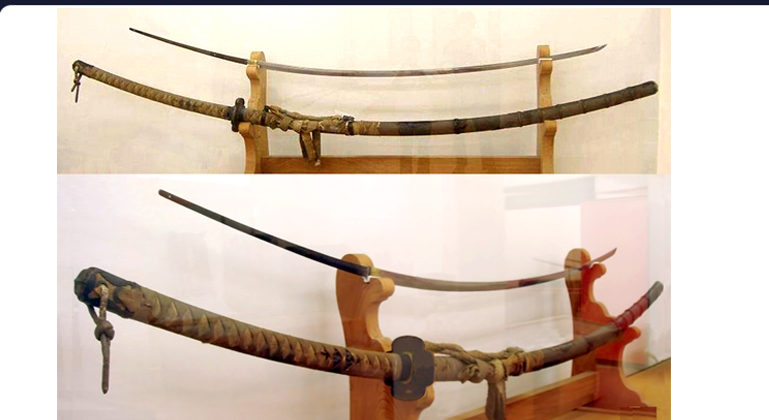
Resonance in Atlantean Superalloys
The Norimitsu ‘dachi: Sword of a Giant Nephilim Samurai
by Alex Putney
April 6, 2018
Remarkable physical evidence for the more recent existence of giant Nephilim warriors in medieval Japan is embodied by an astonishingly large ‘dachi samurai sword manufactured by Bishu Osafune Norimitsu in 1447, during the Muromachi Period (below). This gigantic samurai sword is by far the largest weapon of its kind ever discovered, presenting a total length of 377 cm and a weight of 14.5 kg (32 lbs).
The most well known type of samurai sword is the Katana, which is designed for close combat and presents a relatively short handle for holding with two hands placed closely together. The ‘dachi is the longest type of sword wielded by samurai designed for horse-mounted combat, possessing a long handle for holding with two hands at a shoulder-width apart. ‘dachi normally measure from ~165--175 cm in total length, revealing the oversized Norimitsu ‘dachi to be 2.2 times larger than the average human-sized ‘dachi.
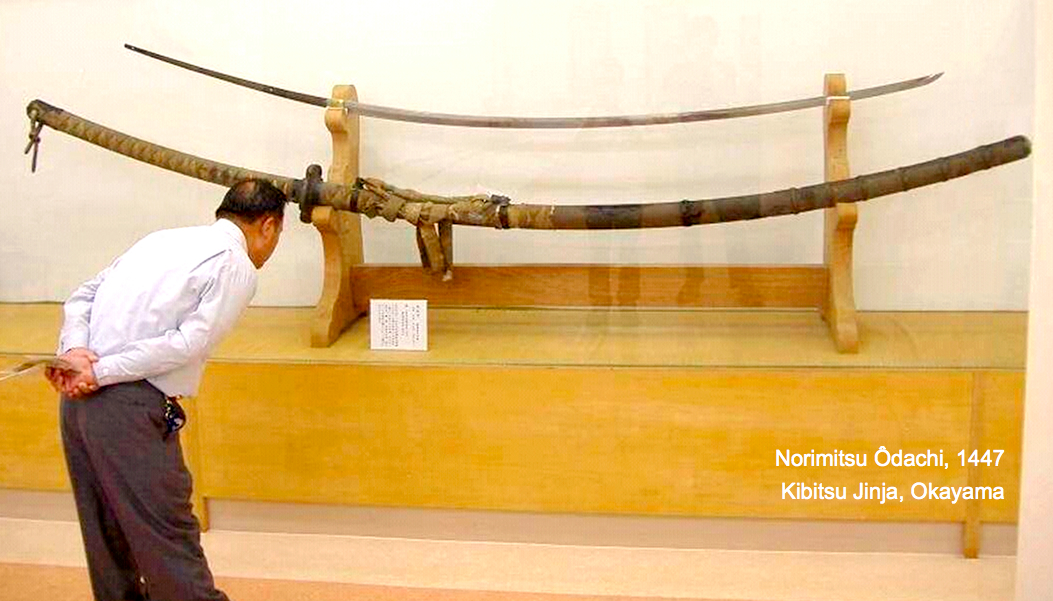
Based on a 183 cm (6') as the average height for a human samurai warrior wielding a 170 cm ‘dachi, a simple size calculation for the giant Nephilim samurai warrior that wielded the Norimitsu ‘dachi in 15th century Japan gives a probable height of ~4.1 m (13' 4"). This size-range precisely corresponds to the skeletal measurements of giant Nephilim remains discovered in caves in both Mexico and Peru.
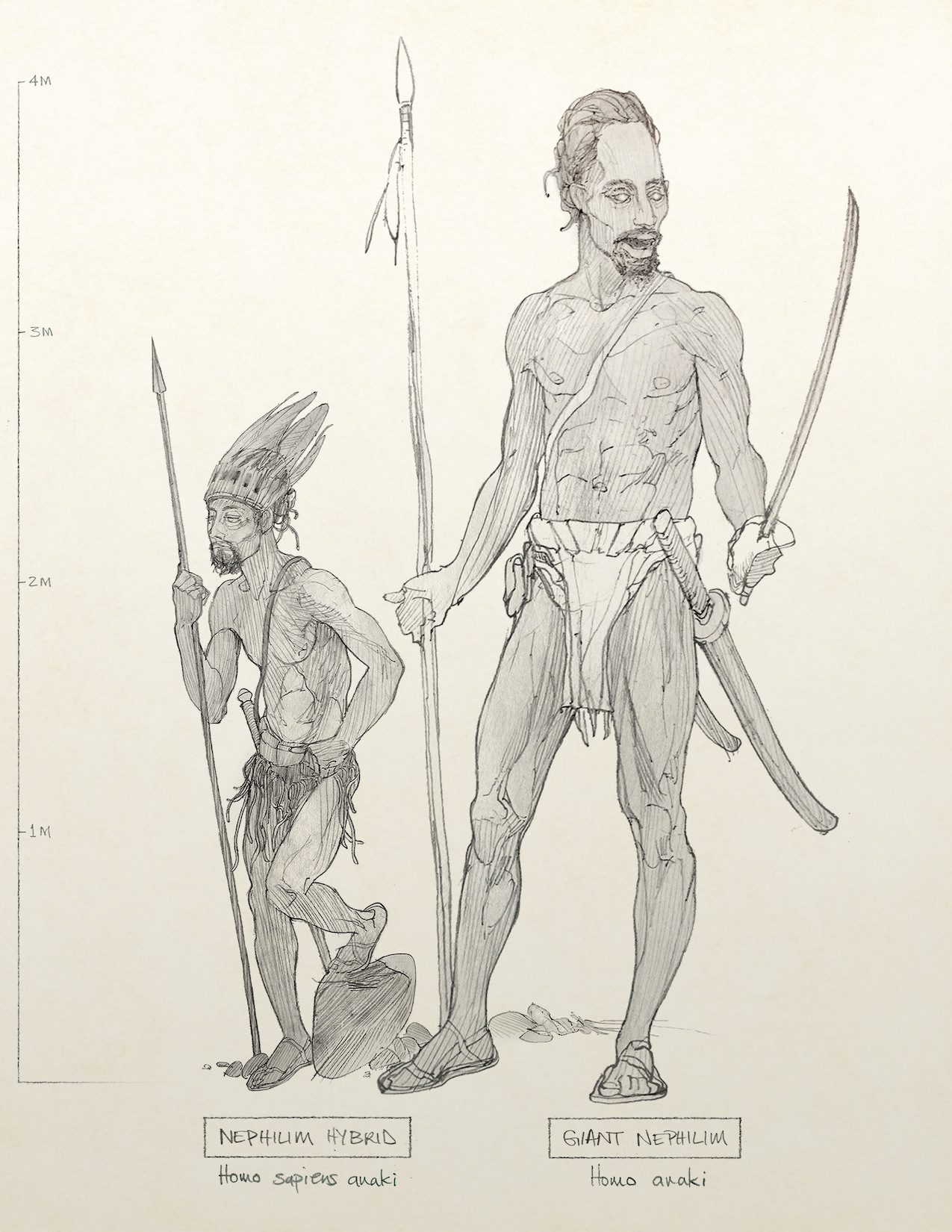
The immense blade of the Norimitsu ‘dachi was covered in a thin layer of rust when discovered, protectively sheathed in its original scabbard. While the details of its provenance are not public knowledge, the blade was repolished in preparation for public display by Okisato Fujishiro in 1992 (at work, below). The gigantic proportions of the sword blade and stock constituted a task equal to the polishing of three average-sized swords, successfully restoring the original, pristine appearance of the masterwork.
Even the largest of warhorse breeds would have been incapable of carrying the great weight and accommodating the immense size of a >4m Nephilim giant (above). Use of armored elephants in Asia during battle in ancient times is well known, with the largest species of African elephants representing the most formidable weapon in any such army. For this reason, the Norimitsu ‘dachi may have been wielded by an elephant-riding giant Nephilim warrior, whose value on the battlefield cannot be underestimated.
While there is no available historical data suggesting skeletal remains of giant Nephilim warriors have been recovered in Japan, clear evidence for their presence in Japan during medieval times cannot be overlooked. Restoration of the Norimitsu ‘dachi samurai blade confirms its authenticity beyond any doubt.
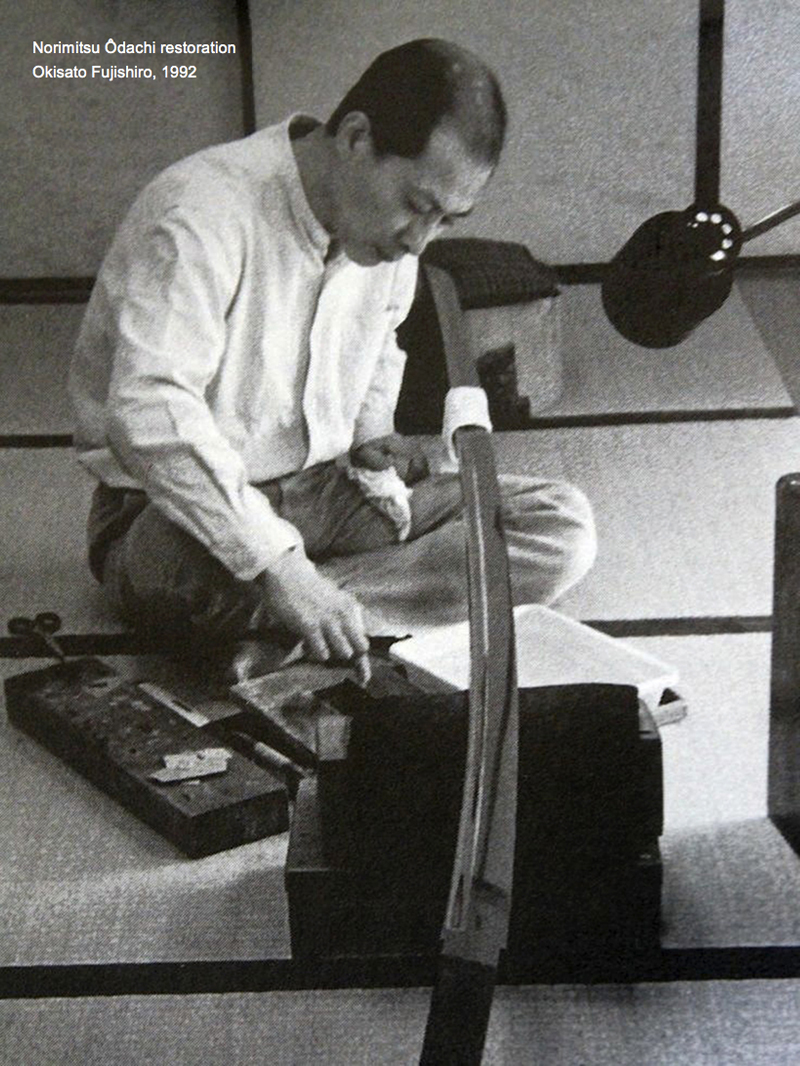
Technical specifications supporting the authenticity of the Norimitsu ‘dachi (details, below) are given with classifications for the shape, curvature, grain and temper pattern, as well as a brief description of the Norimitsu line of swordsmiths credited with the masterful production of this immense recurved blade:
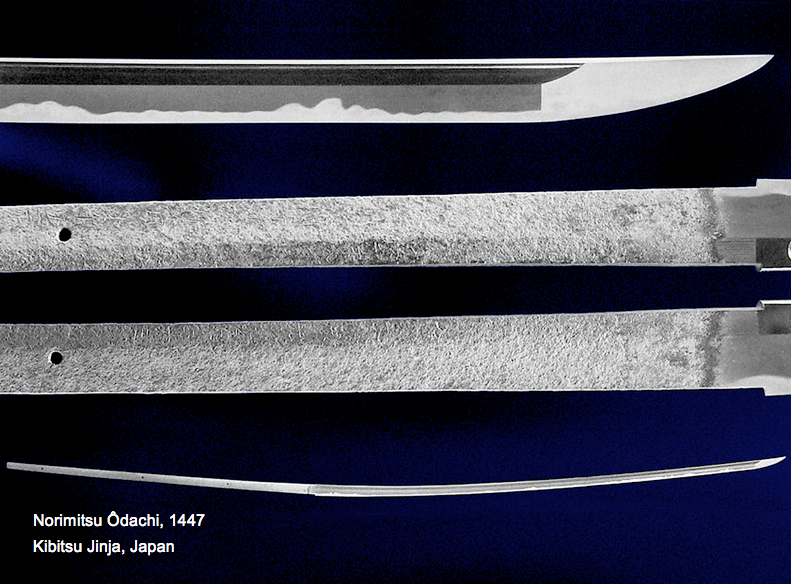
This ‘dachi was made by Norimitsu of Osafune in August 1447. Specifications are as follows:
This ‘dachi is the longest in Japan. What is so amazing about this ‘dachi is that it was forged the same way as a traditional Japanese sword. It was made as a complete sword and not simply made in sections and tacked together. It was forged with incredible skill, which is evident from looking at the hada.
Norimitsu was a popular line of swordsmiths that started in the Oei Bizen school (1394) and continued until the end of Bizen. No one knows much about the current owner of this ‘dachi, but it was recently polished and named "Kibitsu maru" by the priest at Kibitsu Jinja. This Shrine is one of the most sacred in the Kibi area (present day Okayama and Hiroshima prefectures).
This ‘dachi is real, the hada is real, the hamon is real. It is overwhelming to comprehend the creation of this ‘dachi. [It is] truly a wonder.
Highly advanced manufacturing techniques employed in the production of the Norimitsu ‘dachi stretch back dozens of thousands of years --back to the ancient ancestors of the Ainu; the Jomon culture of Paleolithic Japan. At that time, before the catastrophic meteor impacts that devastated the global Atlantean civilization and initiated global sea level rise, the Jomon inhabited a long peninsular landmass that extended south of the present-day Japanese archipelago, of which the Ryuku Islands are remnants.
Like the Ainu of present-day Hokkaido, northernmost of the large islands of Japan, the Korean culture has also maintained many of the sophisticated cultural practices of the Atlantean civilization, most especially witnessed by their production of the horn bow and onggi, both of which have been identified as traditional Atlantean practices utilized worldwide during the extended period from ~30,000--13,000 years ago.
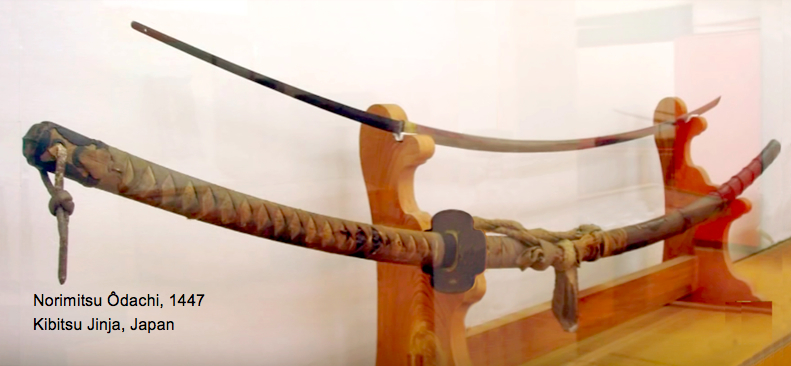
Atlantean production of resonant superalloys that possessed superhardness, due to their special elemental composition, incorporated virtually all metals on the Periodic Table. Advanced surgical applications for extremely sharp electrical knives developed by the Atlanteans were described by Edgar Cayce in a Life Reading for Thomas Townsend Brown, given on June 24, 1941 (Reading 470-33):
[T]here were the abilities for the fusion of copper and brass with the alloy that comes from gold impregnated with arsenic, with the casting of electrical forces through same. This brought those abilities of sharpening or using such metals as these for cutting instruments... [T]he electrical knife was in such a shape with the use of the metals, as to be used as the means for bloodless surgery, as would be termed today --by the very staying forces used which formed coagulating forces in bodies where larger arteries or veins were being entered or cut...
Manufacture of superhard metal alloys enabling the development of supersharp cutting instruments were not only applied to surgical applications, but were most certainly also employing in the production of samurai swords for all sizes of Atlantean humanoid species, including giant Nephilim warriors.
These extraterrestrial giants were well described by Edgar Cayce as the 'Lords of Baal' who ruled over their human subjects. Remains of impressive Atlantean foundation structures situated below the modern-day Japanese Imperial Palace in Tokyo include an expansive network of broad motes flanked by huge angled walls, composed of megalithic blocks cast in Atlantean 'firestone' geopolymer.
The Imperial Palace in Tokyo, Japan (35.68536įN, 139.75337įE) is geopositioned 5,967 miles from the Great Pyramid, a resonant distance corresponding to 23.97% of Earth's mean circumference. This whole number percentage distance conforms to the same distribution pattern observed of many other Atlantean temple sites, confirming these spectacular megalithic constructions were built to protect tunnel entrances leading into a subterran city complex extending far below the surface.
Copyright 2018 Alexander R. Putney